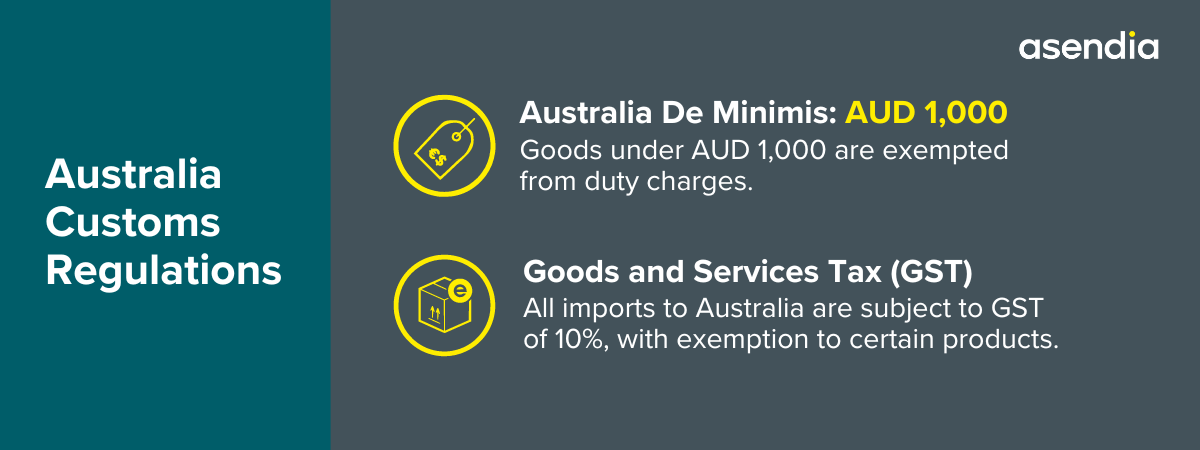Customs Regulations Overview in Australia

The Australia Border Force (ABF) is responsible for customs clearance and enforcing import tax laws on imported goods. In general, any goods that are imported into Australia are liable for duties and taxes, with exemption for most personal effects and goods with concession. If your shipment value exceeds Australia’s De Minimis of AUD 1,000, it will be subject to duty, GST, and IPC which must be paid at the point of importation.
However, the de minimis does not apply to items such as alcoholic beverages or tobacco and tobacco-related products, you still must pay duties and taxes for these items regardless of their value. There is also an exemption for most personal effects and goods with concessions.
Goods and Services Tax (GST)
All imports in Australia are subject to Goods and Services Tax (GST) of 10% unless covered by an exemption. If your business has an annual turnover of AUD 75,000 or more, you must register for GST in Australia. After which you will collect the 10% GST from your customers which you will pay to the Australian Taxation Office (ATO). For non-profit organisations, the threshold is AUD 150,000.
There is also GST exemption for certain products, view the extensive list of goods that are exempted on the Australian Taxation Office’s official website.
Source: Australian Government Business
Required Customs Documents
You don’t necessarily need an import license to import goods or shipments into Australia. However, depending on the nature of your shipments and regardless of the value, you may need to obtain permits to clear the goods.
All your imported shipments or goods must have proper labeling with accurate shipment information (must include country of origin or where it was produced in English). See the full labeling guideline on ABF’s website. It is also recommended that you obtain an Australian Business Number (ABN) as a non-resident business, which would also expedite the customs clearance process.
At the very minimum, here are the documentations you need and things to take note to clear the goods smoothly at customs:
1. Commercial Invoice
The commercial invoice is usually used to determine the true value of goods when assessing customs duties. Your invoice should include the following information:
- Destination port
- Full details of buyer and seller
- Description of goods (itemised in English)
- Amount of items
- Date and terms of sale
- Country of origin
- Value (in USD and foreign currency)
- All charges related to the merchandise (freight, insurance, cost of packing, etc.)
- Any rebates, drawbacks, or bounties received upon exportation of the merchandise
2. Packing List
A detailed overview confirming the merchandise mentioned in the commercial invoice, including information on how the shipment was packed. This may include invoice number, date of shipment, mode of transport, carrier, type of package, etc.
3. Airway Bill
For air freight shipments, an airway bill is required to provide detailed information about the shipment and enable tracking. For sea freight shipments, you will need a bill of lading (BLAD).
4. Certificate of Origin
To show where the goods were manufactured which can affect the tax and duties applicable to the shipment.
Source: ITA | TGL | Epic Sourcing















